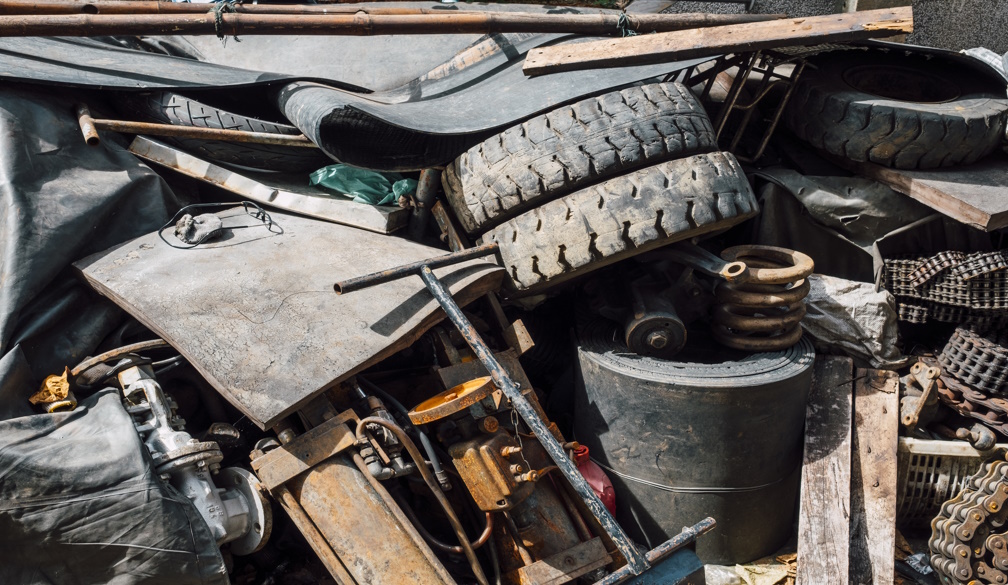Gen Z supports sustainability – and fuels ultra-fast fashion. How does that work?
- Written by Marian Makkar, Senior Lecturer in Marketing, RMIT University

Generation Z has been called “the sustainability generation”.
Born between 1997 and 2013, 58% of this consumer cohort seek to buy products that are sourced sustainably. Australian Gen Zs say they are willing to pay more for brands that have a positive impact on society.
Yet, at the same time, we have witnessed the meteoric rise of ultra-fast fashion from online, direct-to-consumer retailers such as Shein, Temu and Boohoo. Shein alone generated US$32.5 billion (A$48.3 billion) in revenue in 2024 – a 43% increase from 2022.
There are complexities surrounding Gen Z’s shopping habits and how these often fail to align with their values.
On one hand, they covet a brand-new clothing item that is markedly more affordable when purchased from an ultra-fast fashion brand. On the other hand, they are aware of the environmental harms.
What explains this cognitive dissonance?
Caring about the environment …
Different from their predecessors, Gen Z has grown up with climate change as an urgent issue. Being chronically online means these concerns are not limited to their local environment.
Recent research revealed a pattern of stronger emotions of fear, guilt and outrage about the impacts of climate change among younger people, compared with older groups. These emotions could well be a driver of their activism and engagement with climate change.
They expect companies – those they buy from and work for – to prioritise sustainability in their business practices.
However, Gen Z crave more engaging ways to receive sustainability-related content. This is a worthy consideration for key players in the fashion industry.
… vs the temptation of fast fashion
Gen Z consumers are plugged into social media trends that appear with every scroll and swipe on TikTok and Instagram. Social media have spiked cultural trends that accelerate fast fashion.
Influencers promote “reps” (slang for replicas) and “dupes” (duplicates): cheaper, imitation versions of high-end fashion items. This is a way to democratise luxury by normalising “superfake” products and making luxury more accessible to a broader audience.
Social media tactics such as “hauls” and get-ready-with-me (“GRWM”) videos entice Gen Zs to get stuck on the treadmill of overconsumption. The idea is for content creators to show off massive amounts of new, trendy clothing. This in turn fuels the desire for consumers to continuously buy what they are seeing online – in bulk.
Fast fashion giants such as Zara and H&M have based their business models on translating what is on catwalks into cheap clothing, produced in mass quantities. Now, ultra-fast fashion brands such as Shein speed up the production cycle, the trend churn and consequently the volume.
Having seven trending items, over two high-quality outfits, makes more sense to Gen Z consumers in the digital age.
The cost-of-living crisis plays a part too. A recent survey of Australian Gen Zs revealed at least 77% are experiencing money concerns.
The biggest demographic to pull back on spending due to economic stress are 18–26-year-olds. Young people typically earn the lowest wages and enjoy less job security. These financial constraints are challenging to Gen Zs seeking to consume more sustainably.
Fast fashion becomes a cheap option for them to stay trendy without breaking the bank.
The ‘attitude–behaviour gap’
Gen Z are Shein shoppers, haul lovers, micro-trend followers, and repeat outfit shamers. This stands starkly against their eco-conscious values.
While this seems hypocritical, it is what is referred to as the attitude–behaviour gap – the incongruence between what people say and what they actually do. This is a phenomenon noted across multiple generations.
The attitude–behaviour gap has been widely documented in social psychology and ethical consumerism studies. These underscore that consumer intentions are not reliable predictors of behaviour.
Even ethically minded consumers do not always walk their talk. But we can’t expect individual consumers to be entirely responsible for things like the carbon footprint of fast fashion, or the exploitation of workers in factories.
The clothing industry lacks transparency in business practice and Gen Z consumers often lack information about the products they are buying.
The responsibility to shop sustainably should not fall solely on consumers, but on governments, policymakers and corporations to be more ethical.
Unsurprisingly, 88% of Gen Z shoppers do not trust companies’ sustainability claims.
What does this mean for the sustainability movement?
Despite climate change being a major stressor for Gen Z, the attitude–behaviour gap continues to exist when it comes to hunting for a new outfit.
Being bombarded with persuasive tactics from brands and influencers, the ease of access to new items at the click of a button, and the allure of affordable pricing amid a cost-of-living crisis makes it very difficult for even the most committed Gen Z consumer to buy ethically.
The fashion industry is one of the biggest dangers to the environment in terms of its carbon and raw material footprint, and truckloads of clothing ending up in landfills.
While most young people know and respect Greta Thunberg’s environmental mission, she is not the one they are watching on TikTok or liking on Instagram.
It is time to re-engage with social media content creators in different ways that educate consumers, promote responsible behaviour and advocate for changed regulations and business practices. This might include tried-and-true tactics such as influencer endorsements and haul videos that are refocused on more sustainable options – like online second-hand retailers.
The emergence of “underconsumption core” on TikTok in recent months, as well as “deinfluencing”, where influencers call on their followers to buy less, is promising.
While sustainable clothing has a “bad rap” for being expensive, fast fashion brands are trying to adapt by offering options such as H&M Conscious. Any fashion offering must be convenient, accessible and trendy to capture Gen Z’s attention and wallet.
Authors: Marian Makkar, Senior Lecturer in Marketing, RMIT University


















